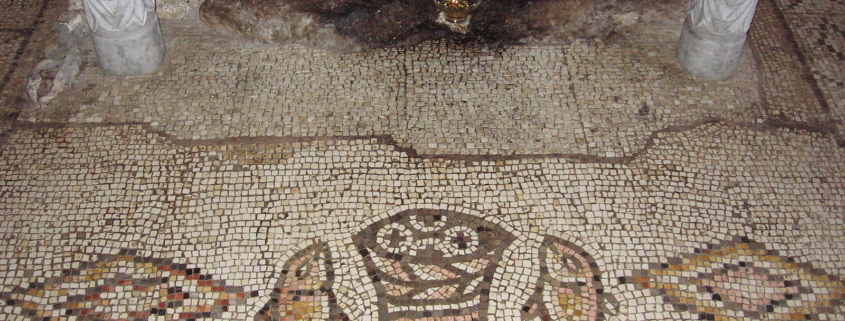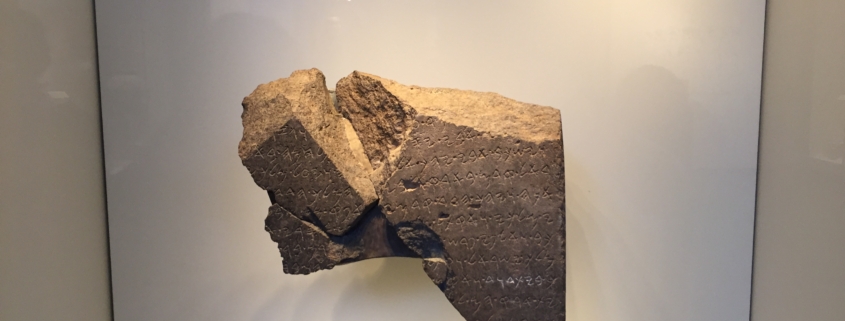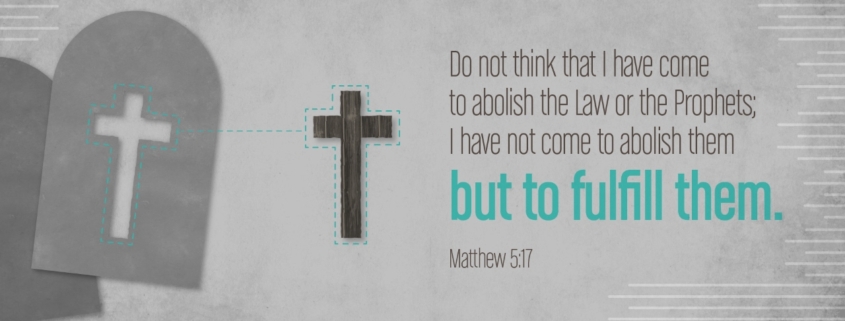Quick video on how Mary’s Immaculate Conception and Perpetual Virginity are referenced — at least obliquely — in Luke’s account of the Annunciation.
Posts
Filmed live on The Faith Explained pilgrimage to the Holy Land, I explain why the Multiplication of the Loaves should be read as a supernatural miracle in Jesus’ career, and how it relates to the daily miracle of the Eucharist. In light of constant doubts, even by high-ranking prelates and scholars in the Church, this is more important than ever. Join us on our next pilgrimage! Reach out here: www.TheFaithExplained.com/contact.
Join us for our next Faith Explained pilgrimage! Message us here: TheFaithExplained.com/contact and we’ll keep you updated.
(My latest for Catholic Ansers Magazine. Enjoy! — Cale)
A few weeks ago, while leading a pilgrimage tour to Israel, I couldn’t wait to bring the group to one of the greatest museums in the world: the Israel Museum in Jerusalem. Packed with artifacts from the biblical period, it’s a treasure trove for anyone interested in the material remains of salvation history.
The museum also houses one of the more important archaeological finds of recent years: an artifact that has bolstered our confidence in the veracity of the Old Testament accounts of the kingdom of David, his son Solomon, and their successors.
Biblical “minimalists” had long contended that King David did not actually preside over a kingdom that originated circa the tenth century B.C., as the Bible states. Indeed, these scholars alleged that David, Solomon, and in fact the entire line of Davidic kings chronicled in the Old Testament, are nothing more than fictional characters invented by the writers of the Hebrew scriptures.
In favor of the “minimalist” argument was the lack of any evidence of David’s existence outside the Bible.
But here’s where archaeology came to the rescue. During the 1993-94 excavations at Tel Dan, in northern Israel, a stele (a stone slab bearing an inscription) was unearthed. Made from basalt, a volcanic rock plentiful in the region, it bears an account of a military victory. Scholars have postulated that the inscription commemorates an Aramean king’s defeat of Israelite forces. It may have been commissioned by Hazael or Ben-Hadad III, his son (cf. 2 Kings 10:32, 13:3, 22; 2 Chron. 22:5).
The key line on the monument, the stunning find, is the mention of the “House of David.” There it was, written in stone—independent confirmation of David’s existence and of a line of kings so powerful that defeating armies from this “House” warranted a public brag of sorts on this stele, for all passersby to read and marvel at.
Analysis of the stele dates it to the mid-ninth century BC, right around the time when, according to Scripture, David’s dynasty would have been flourishing. It appears that the stele was broken by the Israelites after they recaptured the area some time later, and was eventually repurposed into building blocks for the city wall.
After this discovery, as chronicled by Craig Evans, the minimalists changed their approach. “Okay, okay,” they admitted, “maybe David existed after all. But he was a nobody. A local tribal chief, at best, certainly not the originator of the vast, Iron-Age kingdom described in the Old Testament.”
At this point, faced with what seems like special pleading, one is tempted to respond like Jerry Seinfeld: “Really? Really?”
But don’t despair—again, archaeology is our friend here.
First of all, if David had been merely a small-time local yokel, what on earth were his descendants doing fighting battles all the way up north, near the modern-day border that separates Israel and Syria, far from his allegedly tiny operation in Jerusalem?
Also, a vast, centralized complex of buildings—in all likelihood, a government compound—has been unearthed in the Old City of Jerusalem, and can be seen on tours today. It’s located in what’s known as the “City of David” and dates to approximately the tenth century B.C.; once more, the time when Scripture says that David and Solomon were establishing their empire. Again, this seems fairly excessive if we’re talking about an insignificant tribal chieftain, but it does fit the biblical narrative of David’s expansive realm.
To this our minimalist might say, “I’ll grant you that David existed, and perhaps he did preside over a significantly large kingdom, but we still can’t trust what the Bible says about him. The people of David’s time would not have been significantly literate enough to record his exploits or those of his descendants”.
This last objection is at least partially answered by—you guessed it—yet another archaeological discovery. In 2008, an ostracon (an inscribed piece of pottery) dating to the tenth century B.C. was disinterred at the ancient fortress city of Khirbet Qeiyafa, which was the only fortified Judahite city during the reigns of David and his predecessor, King Saul (in fact, the Qeiyafa ostracon is the only extant relic that mentions Saul).
The famed French epigrapher Émile Puech regards the inscription as the earliest writing narrating the transition of Israel from a people ruled by judges into a kingdom. It shows that the people living around David’s time were literate, and in fact, more than capable of recording (and passing on) the annals of David’s dynasty, such as we see in the biblical books of Kings and Chronicles.
The Tel Dan stele and the Qeiyafa ostracon are just two examples from the multitude of archaeological discoveries in Israel that have bolstered our understanding of, and in many cases substantiated the reliability of, biblical records of history. Since only roughly five percent of all biblical sites have been excavated to date (which is unbelievable considering how much has already been found), It’s truly exciting to think of how many more such finds may be unearthed in the years to come.
Here’s my December article for Catholic Answers Magazine. Merry Christmas!
“The beginning of the gospel of Jesus Christ, the Son of God” (Mark 1:1).
The Gospel of Mark doesn’t have an “infancy narrative” about the events surrounding Jesus’ conception and birth as do Matthew and Luke. Rather, Mark begins in a deceptively simple manner with these opening words, known as an incipit.
Almost 2,000 years after these words were originally inscribed on parchment, we tend to read this line and think nothing much of it—perhaps even yawn—because it’s something we’ve heard many times before. And yet with this simple sentence, Mark would have absolutely shocked the entire world, arresting the attention of pious Jews and pagan Romans alike.
With respect to a Jewish audience, it’s easy to see why: in calling Jesus the Christ, Mark signals that he the long-awaited Jewish Messiah. But it’s the term Son of God that would have raised many a Roman eyebrow (remember—Mark’s Gospel was written to the Church at Rome, where he served as the chronicler of Peter’s memoirs of the Lord). Why is that?
Mark has a big problem as he tries to convince Romans that they should commit their lives to Jesus—and the crux of the matter is the cross itself. Who was the most powerful person in the Roman Empire? Why, the emperor himself, obviously. The Roman Caesars were crowned in an elaborate ceremony in which they were draped in a royal purple robe, with great pomp, amidst shouts of “Hail, Caesar!” When a new emperor ascended to the throne, or when Rome scored a great military victory, it was published throughout the empire as “Good News.”
In contrast, the most powerless person in the empire was the victim of crucifixion. This was an ordeal so brutal, so violent, so humiliating, that it was almost never administered to Rome’s own citizens (for whom the comparatively humane act of beheading was the preferred method of execution, as in St. Paul’s case). The contrast between the mighty Caesar and the seemingly defeated Jesus couldn’t have been more stark. This is why one major commentator on Mark calls that Gospel an “apology for the cross.”
We could add to this the many public inscriptions that have been unearthed from Rome’s ruins. These served as a civic catechism of sorts, proclaiming what one was supposed to know and believe as a citizen. And one thing all Romans were expected to assent to was this: not only was the emperor extremely powerful, he was to be considered the divine “son of god.” Here are just a few examples from a much longer list compiled by Craig Evans:
- Julius Caesar (48-44 B.C.):
An inscription from Ephesus describes him as “the manifest god from Ares and Aphrodite, and universal savior of human life.” Also, from Carthaea: “The Carthaean people honor the god and emperor and savior of the inhabited world, Gaius Julius Caesar, son of Gaius Caesar” (there are many more such inscriptions from the period).
- Augustus (30 B.C.-A.D. 14):
“Emperor Caesar Augustus, son of god”; “Emperor Caesar (Augustus), god from god”; “Emperor Caesar Augustus, savior and benefactor.” An inscription from Priene celebrates Augustus’s birthday as “the birthday of the god.”
- Tiberius (A.D. 14-37, who reigned when Jesus was crucified):
“Emperor Tiberius Caesar Augustus, son of god”; and “Emperor Tiberius Caesar, new Augustus, son of god, Zeus the liberator”.
- Nero (the crazed emperor who reigned from A.D. 54-68—there are some real doozies here):
“Nero Caesar, the lord”; “Nero Claudius Caesar… the savior and benefactor of the inhabited world”; “The good god of the inhabited world, the beginning and existence of all good things”; “the son of the greatest of the gods”; and “Nero, the lord of the whole world”.
So, in light of this exalted view of their emperor, why should citizens of Rome choose to pledge their allegiance to Jesus and not Caesar? Readers or hearers of Mark would no doubt be asking this question as they experienced this Gospel. Well, its account of Jesus’ authoritative teaching about the Kingdom, backed up with powerful exorcisms and healings, would no doubt have made an impression.
But so too would the presence in Mark’s Passion narrative of someone whom we might easily overlook: the figure of the Roman centurion who sees Jesus die.
The centurion, whose ultimate superior is Caesar, the alleged “son of god,” may have been aware of how his fellows had humiliated Jesus in a mock “coronation” replete with purple robe and a crown of thorns, and shouts not of “Hail Caesar” but, “Hail, King of the Jews!” as they beat him mercilessly (Mark 15:16-20). Yet somehow, as he watches Jesus die on the throne of the cross, and witnesses the powerful release of Jesus’ spirit, which tears the temple curtain in two, the centurion is granted the grace to recognize that one far greater than Caesar is here: “Surely this man” — and not Caesar — “is the Son of God” (15:37-39).
This was the very statement—politically perilous and subversive—that Roman Christians had to make their own. A statement about who truly possessed a sovereign claim over the world. Many of them were to stare down the absolute claims and power of the state and pay for it with their lives, as Jesus did. Peter himself, the source behind Mark’s Gospel, would also meet the horrific cross.
As we prepare to celebrate the true “birthday of the God” this Christmas, let us reflect on the kingship Jesus claims over our lives. Having conquered the grave, a foe no earthly ruler, however exalted, has ever defeated, he is worthy of it.
My latest for Catholic Answers Magazine.
Once, in Jerusalem, I was privileged to attend Mass with a group of Catholics who had converted from Judaism and celebrated the Mass in Hebrew. None of those present who had come to believe in Yeshua HaMashiach (Jesus the Messiah) would have said they had “changed religions.” They didn’t view the Catholic Church as a new religion that had replaced Judaism—rather, it was Judaism, but with the Messiah having come.
For these converts, many facets of New Covenant worship evoked elements of the Old: features such as the tabernacle, the ambo, and the altar made sense to them in a way that they may not for those who convert to Catholicism from non-Christian or Protestant Christian backgrounds. And the similarities didn’t end with liturgy. They didn’t see Catholicism’s doctrines as something foreign, either. Rather, they saw the continuity, the inner logic, of Jesus’ teachings vis-a-vis the Old Testament.
Considering that Jesus of Nazareth was a faithful Jew, this really shouldn’t be a surprise. Yet throughout the centuries until now, many theologians and scholars have believed the opposite: that Jesus broke clean with the Old Covenant religion of his day, railing against its “legalism” and focusing instead entirely on God’s mercy and love.
Without a doubt, Jesus delighted in dispensing God’s mercy to those who repented of sin. But there is no opposition between mercy and law. In fact, in so many ways, God’s law is an expression of his mercy. A careful reading of the New Testament shows that Jesus was in no way opposed the law given to Moses.
Open your Bible and let’s take a look together.
For example: in the Gospel of Matthew Jesus gives five major discourses that represent the crucial emphases of his teaching that the evangelist wished to impart to his audience. The first is the Sermon on the Mount, in chapters 5-7. The second is the Missionary Discourse in chapter 10, followed by the Parabolic Discourse in chapter 13 and the Community Discourse in chapter 18. The fifth and final speech is the Eschatological Discourse in chapters 24-25.
We have several reasons to believe that Matthew intentionally arranged this material into five “teaching blocks.” First, there are literary clues. Each discourse concludes with the verb telein (“to finish”—cf. Matt. 7:28, 11:1, 13:53, 19:1, 26:1). This corresponds to verbiage from the Pentateuch: “When Moses finished (suntelein) speaking all these words” (Deut. 31:1; cf. Num. 16:31; Deut. 31:24, 32:45).
I’ve discussed elsewhere how Jesus is presented in Matthew as a new Moses. Matthew’s arrangement of Christ’s teaching into five narrative segments is meant to allude to the five books of Moses, the first five books of the Hebrew Bible. Why? In large measure to deal with the allegations of some Jews that Jesus and his followers intended to abolish the Law of Moses. This is an important theme in Matthew’s Gospel, intended as it is for a primarily Hebrew audience.
The number five (are you sensing a theme here?) comes into play most clearly in the material following Matthew 5:17-20, which is the key passage, in many ways, to understanding the Sermon on the Mount. In these verses, Jesus explains that he has “not come to abolish the law, but to fulfill” (v. 17), and that “until heaven and earth pass away, not one letter, not one stroke of a letter, will pass from the law until all is accomplished” (v. 18). Jesus also states that lawbreakers (such as he is accused of being) “will be called least in the kingdom of heaven; but whoever does them and teaches them (the commandments of the law) will be called great in the kingdom of heaven” (v. 19).
Then Jesus states that, in order to enter the kingdom of heaven, one’s “righteousness” must be greater than that of the scribes and Pharisees (v. 20). This is truly a remarkable statement, because in Jesus’ day those very scribes and Pharisees were considered theauthority on the interpretation of the Law of Moses.
This highlights the main issue: who has the true interpretation of the law? Jesus and his followers? The Pharisees and scribes? Some other group?
Jesus goes on to show, by means of a series of five “antitheses” (“You have heard it said . . . but I say to you”), that his interpretation of the law, as practiced by himself and his followers, is the true interpretation—and indeed, the fulfillment—of the law given to Moses. These five antitheses correspond to the five fulfilments of Old Testament prophecy given in the infancy narrative of Matthew (1:22-23, fulfilling Isaiah 7:14; 2:5-6, fulfilling Micah 5:2; 2:15, fulfilling Hosea 11:1; 2:17-18, fulfilling Jeremiah 31:15; and 2:23, which summarizes Judges 13:5 and Isaiah 11:1). Together, they make a powerful case that Jesus has come to fulfill the law and the prophets.
Specifically, the five antitheses of the Sermon on the Mount fulfill five aspects of the books of Moses: Deuteronomy 5:17 is fulfilled in Matthew 5:21; Exodus 20:14 is fulfilled in Matthew 5:27; Leviticus 19:12 is fulfilled in Matthew 5:33; Exodus 21:23-25 is fulfilled in Matthew 5:38; and Leviticus 19:17-18 is fulfilled in Matthew 5:43.
Many “historical Jesus” scholars, when assessing whether Jesus could have plausibly taught what the Gospels claim he did, are fond of employing something called the criterion of double dissimilarity. “If something sounds too much like the teaching of Judaism,” the thinking goes, “or too much like later Church teaching, Jesus probably didn’t say it.” That has always sounded ridiculous to me, considering that Jesus was Jewish and that he founded the Church! We should expect to find an abundance of continuity between the Old Testament, the teaching of Jesus, and that of the Church. And this is exactly what we do find.
And here’s one final, commonsense fact: if Jesus, as many caricatures of him suggest, really represented a radical break with Jewish teaching, there is simply no plausible way he would have garnered such a massive following among his fellow Israelites. No one would have believed that he was the promised Messiah if he had rejected the Law of Moses!
It seems reasonable, then, to believe the opposite, which is exactly what Jesus set out to do: not to abolish the law but to fulfill it (Matt. 5:17).
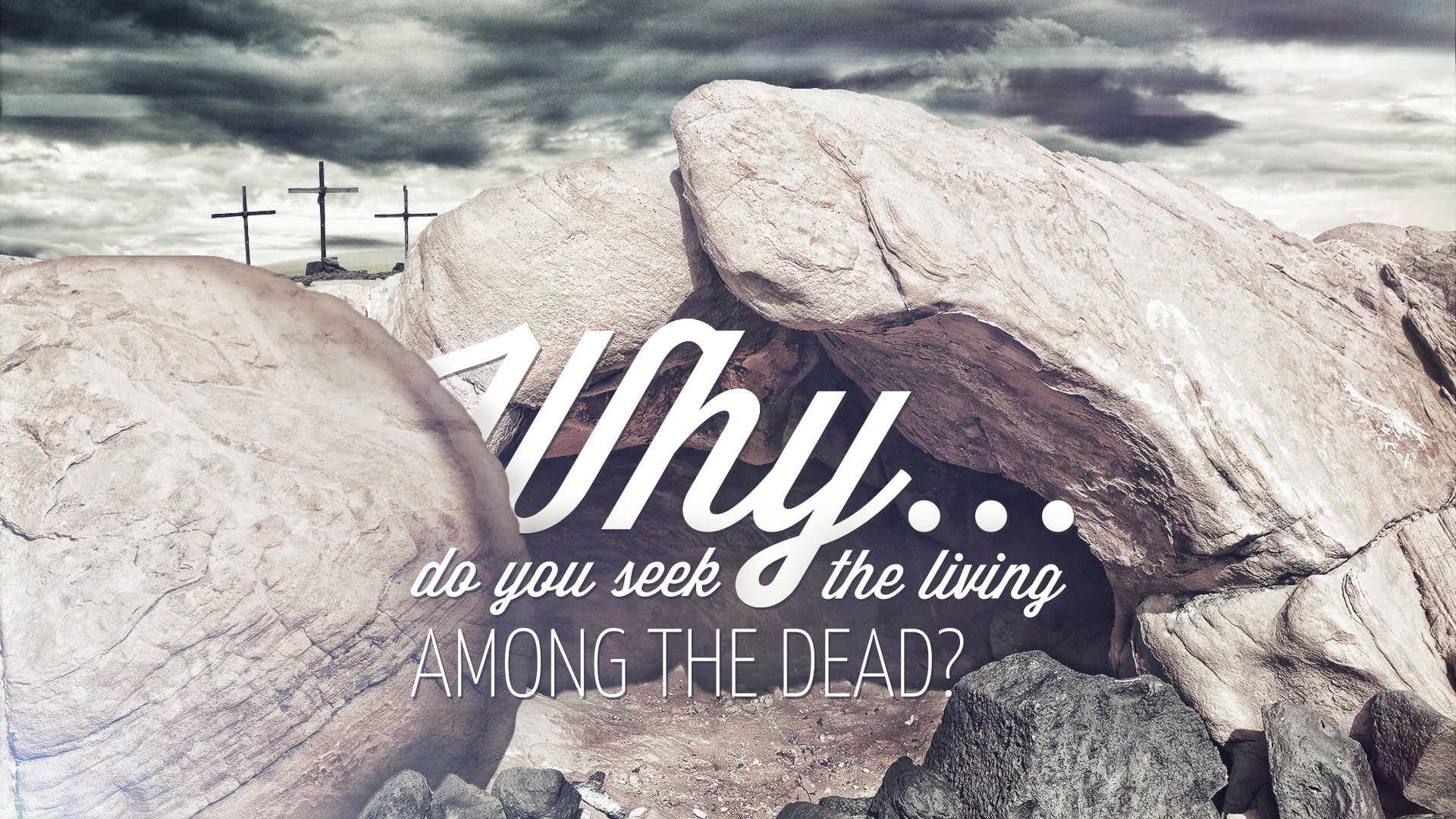
Note: This is my first article for Catholic Answers Magazine Online (or CAMO for short), and I hope you enjoy it. Catholic Answers is an organization I’ve long admired, and it has been a privilege getting to know the staff there over the past year, especially during the time I guest hosted Catholic Answers Live. Many thanks to the team there for publishing this piece.
Anyone who has read the Gospels in a more than cursory manner has come across what appear to be contradictions between them as they report the words and deeds of Jesus of Nazareth. This is no less true when we consider how they describe the most important event of all: the resurrection of Christ. If this event is not historical, says St. Paul, “our preaching is in vain, and your faith is in vain” (1 Cor. 15:14).
Speaking of St. Paul: before we consider apparent contradictions in the Gospels’ Easter accounts, we must remember that the Gospels are not our earliest written accounts of Jesus’ resurrection: those would be the letters of Paul. Even if the Gospels had never been composed, there would still be plausible literary testimony of the event, evidence with which a skeptic must deal. 1 Corinthians 15, which discusses the Resurrection, was written as early as A.D. 53, most likely prior to the publishing of at least some of the Gospels. What’s more, this chapter contains an even earlier ancient “creed” of sorts, crystallizing Easter faith in just a few lines (1 Cor. 15:3–7).
Even though the Gospels are not our earliest or only written sources on Easter, discrepancies in how they report resurrection phenomena have caused many to call into question their historical authenticity.
The empty tomb accounts
In Mark (which the majority of biblical scholars contend was the first Gospel composed), when the women disciples of Jesus arrive at the tomb early on Easter Sunday, the stone has already been rolled away. A “young man” in dazzling raiment (in all likelihood an angel) is inside the tomb. In Luke’s account, two men are inside. Matthew’s account has Mary Magdalene and another Mary arriving at a still-sealed tomb, but an earthquake suddenly occurs, whereupon an angel descends and rolls back the heavy stone. Three Gospels, and seemingly three different accounts.
Mark, Matthew, and Luke also give us slightly different lists of exactly which women were present. Mark has these women respond in fear, and states that they said nothing about this to anyone. In Matthew’s account, the two women meet Jesus on their way to inform the disciples of the Easter news. Luke does not say they ran into Jesus but rather that they immediately told the disciples, who didn’t buy their story. Same Gospels, and again, the accounts seem to differ.
So, why the differences?
Ancient biographies
As much as we might want the Gospels to conform to our modern conventions of history writing, they don’t read like contemporary police reports. But that doesn’t mean they don’t contain reliable accounts. In fact, they are perfectly consonant with how the ancients recorded history. The key is to understand the literary conventions of the time, which was the mid-first century A.D. , and how the Gospels fit that mold.
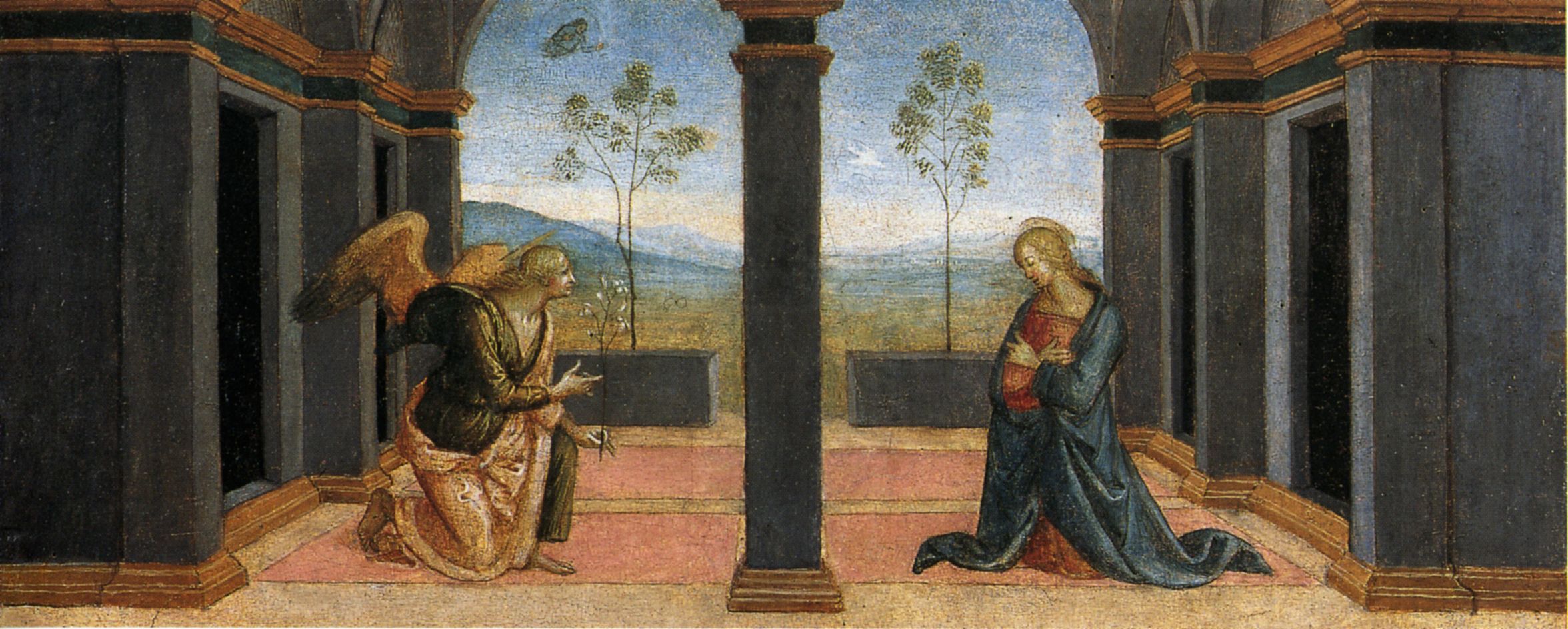
Today’s Gospel on this Solemnity of the Annunciation is the famous account of Mary’s encounter with Gabriel from Luke 1:26-38. It includes some indirect proof for two major Marian dogmas of the Church – the Immaculate Conception (which was recently celebrated on Dec. 8), and the perpetual virginity of Our Lady. It also gives us part of the biblical roots of the “Hail Mary”.
When the archangel Gabriel greets Mary, it marks the only recorded incident in scripture that an angel greets someone by their title, not their name. “Hail, Full of Grace, the Lord is with you” (Lk 1:28). This, of course, is the first line of the “Hail Mary”, with the second line, “Blessed are you among women, and blessed is the fruit of your womb”, from Luke 1:42. So much for the ridiculous argument that the prayer is “unbiblical”.
But what of those dogmas? Speaking of the phrase, “Full of Grace”, in the original Greek of Luke’s Gospel, it is an interesting term: kecharitomene. It means, literally, “one who has been made full of God’s grace” (biblical translations that render this term “highly favored one”, or something to that effect, don’t cut it) . It’s a past perfect term, meaning that, at some point in the past, Mary was made perfectly full of God’s grace. This condition extends out into the future, into eternity. This is exactly what the Immaculate Conception is all about – that, from the first moment of her existence, Mary was preserved free from all stain of original sin. If one is perfectly full of the grace of God, there is no room for sin.
With respect to the perpetual virginity, Gabriel explains to Mary that she will bear the Messiah, and at this point he has said nothing about Jesus being conceived by the Holy Spirit. Yet, Mary says, “How can this be, since I am a virgin?” (Lk 1:34). A very strange question for a young woman to ask, who, as we have already been told, was engaged to be married. Unless, that is, she had already intended to remain a virgin, consecrating herself wholly to God.
This post was originally published as “Mary of the Annunciation”.

In this Sunday’s Gospel reading (Matt 11:2-11), John the Baptist, who by this time has been imprisoned by Herod, sends messengers to ask Jesus if he is the promised Messiah. Have you ever wondered why John did that? Have you ever wondered why Jesus doesn’t simply answer, “Yes”? Read on!
Indeed, Jesus’ reply to the imprisoned John the Baptist (Matt 11:2–6; cf. Luke 7:18–23) is seen by some commentators as not Messianic. Some have even gone so far as to suggest that Jesus never personally believed he was the Messiah. When asked “Are you he who is to come, or shall we look for another?” (Matt 11:3), Jesus answers in what appears to be a vague manner, using words from Isaiah 61: “Go and tell John what you hear and see: the blind receive their sight and the lame walk, lepers are cleansed and the deaf hear, and the dead are raised up, and the poor have good news preached to them. And blessed is he who takes no offense at me” (Matt 11:4-6).
A very important clue as to why Jesus answered the way he did was discovered in the Dead Sea Scrolls. The Scrolls were written roughly around the time of the Advent of Jesus Christ – between the last three centuries BC and the first century AD. Although they were composed by a sectarian, apocalyptic Jewish sect, they do shed light on what Jews who were roughly contemporaneous to Jesus believed about the coming Messiah.
One of the most important Scrolls that was discovered, known as 4Q521, says this:
For the heavens and the earth will listen to his Messiah…For he will honour the devout upon the throne of eternal royalty, freeing prisoners, giving sight to the blind, straightening out the twisted…and the Lord will perform marvellous acts…for he will heal the badly wounded and will make the dead live, he will proclaim good news to the meek, give lavishly to the needy, lead the exiled, and enrich the hungry.
One can easily see by comparing these two texts why it was that John asked the question about Jesus’ Messiahship, and why Jesus replied the way he did. It was assumed that when the Messiah arrived, according to 4Q521, “prisoners would be set free”. The righteous John, at this time languishing in Herod’s prison fortress at Machaerus, is wondering why Jesus hasn’t sprung him in a “prison break” of sorts. Jesus replies to John by noting that his marvellous works indeed match up with the deeds of the expected Messiah, in line with the teaching of Isaiah 61 and 4Q521. For Jesus to be any more explicit than this would arouse the attention of the secular authorities, prior to the completion of his Messianic mission. However, attentive Jews would have understood Jesus’ claims. Thus, in a culturally relevant manner, Jesus is inviting his fellow Hebrews to consider the evidence of his ministry and draw their own conclusions.

This Sunday is the Church’s “New Year’s Day”, as it were. It’s not only the first Sunday of Advent, but also the beginning of a new liturgical year in the Church. It’s a great time to start over, start fresh, and try to live our faith better. So, as we make our Catholic “New Year’s resolutions” about how to live Advent well, we need to keep some important points in mind:
The first thing we need to remember is that the season of Advent is not the season of Christmas! This is very difficult for us to do, because our culture has completely forgotten this truth. The culture at large wants to either A) eliminate all religious references to the season at all – for example, calling it simply the “Holiday Season”, or B) celebrating Christmas prematurely, within the season of Advent.
In the first case (A), cultural relativism – with a particularly virulent hatred for Christianity – seeks to eliminate all references to the divine at this time of year. But we really can’t escape the truth. Even the word “holiday” actually means “holy day”.
However, for Catholics, the second problem (B) is much more of a temptation. It has become quite common for people to “pull back” the feast of Christmas into Advent. The Church teaches us that Advent is actually (much like Lent) a season of penitential preparation for the great Feast of Christmas. This is one reason why many dioceses have an annual “Advent Confessions Day”, just as in Lent. This is also why Mass readings during Advent focus on the Second Coming of Christ and the Great Judgment – we need to put our lives in order and be ready to meet the great King.
The Church even encourages fasting during Advent. Without a fast, there can be no feast at Christmas. Other penances, like prayer and giving to the needy, get us spiritually ready for Christmas (cf. CCC 1434).
In stark contrast, cultural practices like office Christmas parties and other festive gatherings prior to Christmas encourage sumptuous feasting – and tragically, in so many cases, dissolute and downright dreadful debauchery. One should take to heart the words of Saint Paul from this Sunday’s second reading:
Brothers and sisters: You know the time; it is the hour now for you to awake from sleep. For our salvation is nearer now than when we first believed; the night is advanced, the day is at hand. Let us then throw off the works of darkness and put on the armor of light;
let us conduct ourselves properly as in the day, not in orgies and drunkenness, not in promiscuity and lust, not in rivalry and jealousy. But put on the Lord Jesus Christ, and make no provision for the desires of the sinful nature (Romans 13:11-14).
Prayer, penance, and preparation. That’s the recipe for living Advent well. The great Feast of Christmas will be all the sweeter for us as a result.


